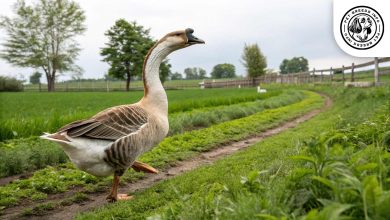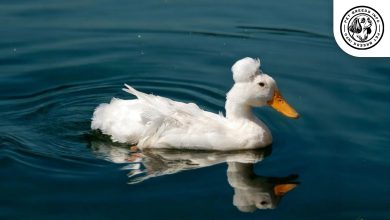Masked Lovebird Breed: Personality, Lifespan, Food & Care
General Introduction of the Breed
The Masked Lovebird (Agapornis personatus), also known as the Yellow-collared Lovebird, is a small and colorful parrot species native to Tanzania, Africa. This charming and affectionate bird was first discovered in the 19th century and has since become one of the most popular lovebird species kept as pets. Due to its vibrant colors and playful nature, Masked Lovebirds have gained popularity among bird enthusiasts worldwide.
Table of Contents
| Common Name | Masked Lovebird (Yellow-collared Lovebird) |
| Scientific Name | Agapornis personatus |
| Origin | Tanzania, Africa |
| Size | 14–15 cm (5.5–6 in), ~50 grams |
| Lifespan | 10–15 years (can live longer with proper care) |
| Colors | Green body, yellow collar, black face, red beak |
| Talking Ability | Minimal; may mimic simple sounds |
| Noise Level | Moderate; occasional loud chirps |
| Social Behavior | Highly social, prefers being kept in pairs |
Physical Characteristics
The Masked Lovebird is a small-sized parrot, typically measuring between 5.5 to 6 inches (14-15 cm) in length and weighing around 50 grams.
Its feathers display a striking combination of colors. The bird is primarily green, with a bright yellow collar around the neck and a black “masked” face, which gives it its name. The beak is a deep red, and its eyes are ringed with a white patch.
Masked Lovebirds have a compact, stout build, with short, rounded tails and small, rounded wings. Their feet are zygodactyl, meaning two toes face forward and two face backward, which helps them grasp and climb branches easily.
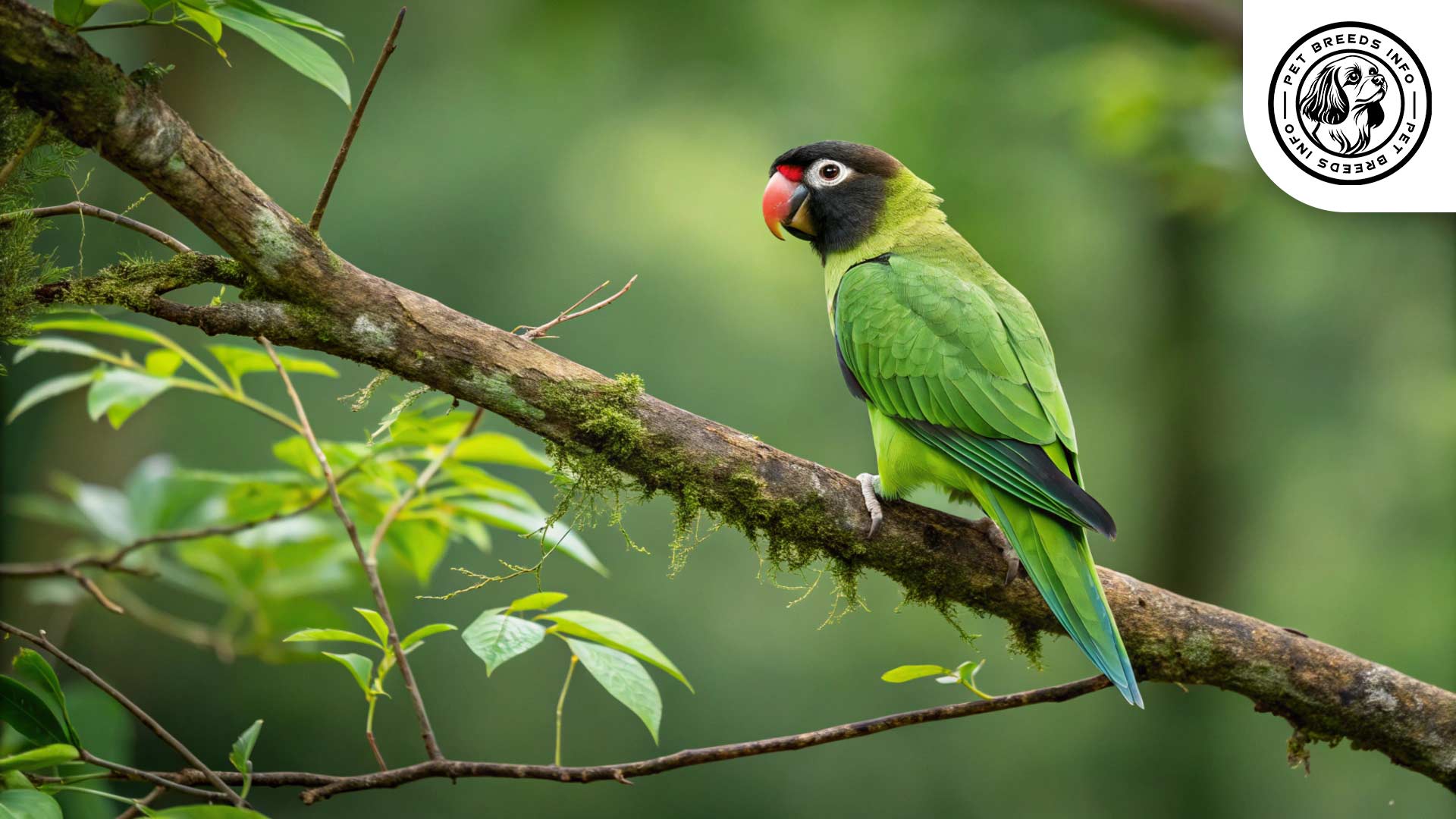
Personality and Temperament
Masked Lovebirds are intelligent and curious birds with a playful and energetic nature. They are highly active and require plenty of mental stimulation to stay happy.
They form strong bonds with their owners and can be quite affectionate. However, they can also be territorial and sometimes aggressive toward other birds if not properly socialized.
These birds are social creatures that thrive with companionship, often doing well when kept in bonded pairs. They love exploring their environment, playing with toys, and engaging in various activities to keep themselves entertained.
Read More: Sumatra Chicken
Care and Maintenance Requirements
Masked Lovebirds need a spacious cage with enough room for flying, climbing, and playing. The cage should be equipped with perches, swings, and chewable toys to keep them entertained.
They require regular exercise outside their cage in a safe, bird-proofed environment. Daily interaction with their owner is crucial to maintain their social needs.
Grooming is minimal, but their cage and accessories should be kept clean to prevent disease. Occasional nail trims may be necessary, along with providing a shallow dish for bathing.
They are sensitive to extreme temperatures, so they should be kept in a warm and stable indoor environment.
Diet and Nutrition
Masked Lovebirds thrive on a diet consisting of high-quality pellets, fresh fruits, and vegetables. A balanced diet helps maintain their health and bright plumage.
They should be given a mix of leafy greens, carrots, bell peppers, apples, and other safe fruits and vegetables.
Certain foods must be avoided, including avocado, chocolate, caffeine, onions, and salty or sugary foods.
They should have access to fresh water at all times, and their food portions should be monitored to prevent obesity.
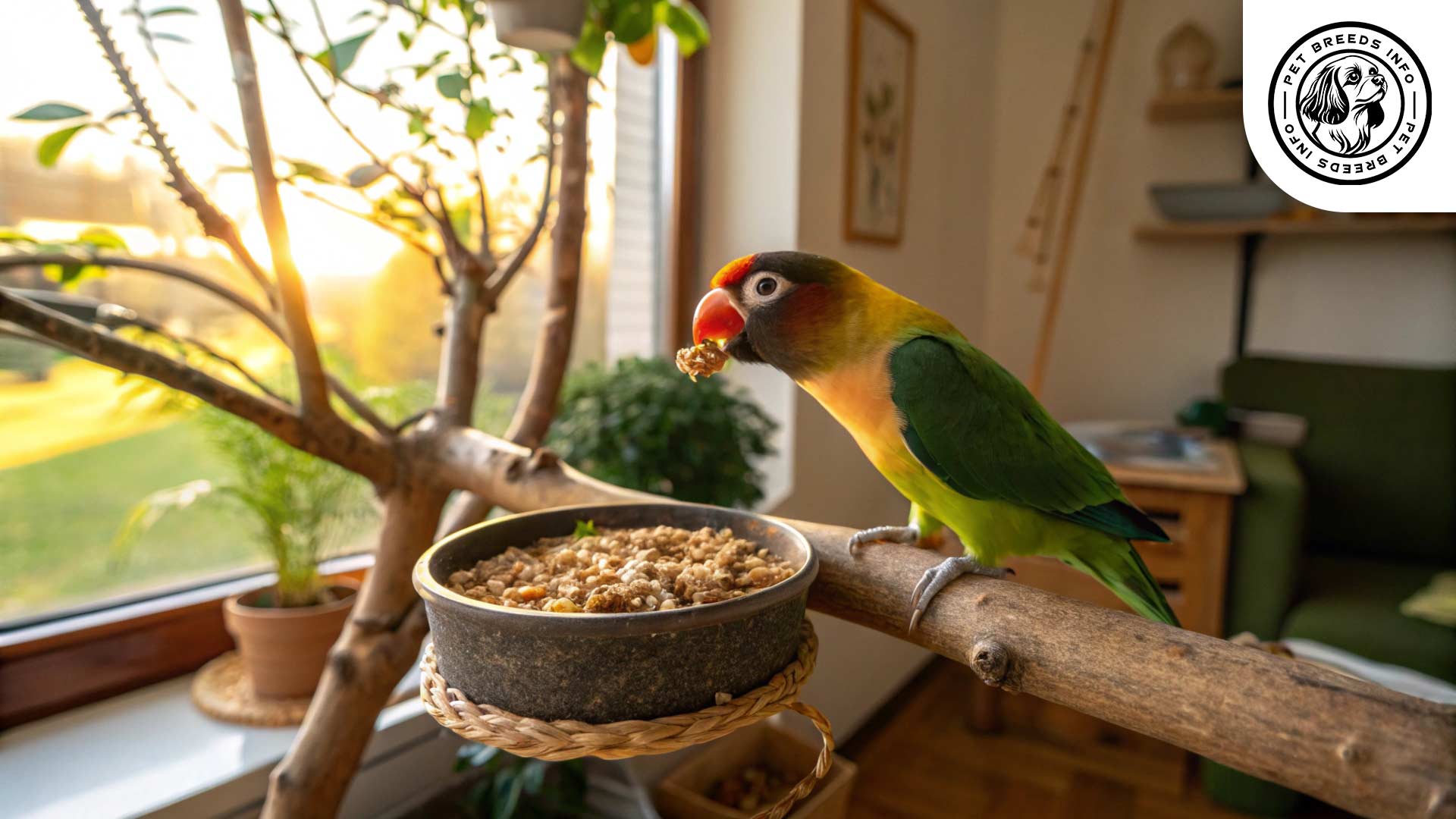
Health and Common Medical Issues
Masked Lovebirds are generally hardy birds but can be prone to common avian diseases such as respiratory infections, feather plucking due to boredom or stress, and psittacosis (a bacterial infection).
They can also suffer from vitamin deficiencies if not provided with a balanced diet.
The average lifespan of a Masked Lovebird is between 10-15 years, but with proper care, they can live even longer.
Regular vet check-ups and a clean living environment help prevent many health problems.
Read More: Magpie duck
Training and Behavior Management
Masked Lovebirds are intelligent and can be trained with patience and consistency. They can learn basic tricks, recognize their name, and even respond to simple commands.
Positive reinforcement, such as treats and praise, is the best way to encourage good behavior.
Early training and socialization are essential to prevent aggressive tendencies and to ensure that the bird remains friendly and interactive.
Interaction with Other Animals and Humans
Masked Lovebirds thrive in households where they receive plenty of social interaction. They are affectionate with their owners but may not tolerate rough handling, making them best suited for families with older children who understand how to handle birds gently.
They can coexist with other birds but may become territorial if not introduced properly. It is recommended to keep them in bonded pairs to fulfill their social needs.
Price and Availability
The cost of a Masked Lovebird varies depending on the breeder, location, and availability. Generally, they range between $50 to $150.
When buying or adopting, it is essential to ensure the bird is from a reputable breeder or rescue center that provides healthy and well-socialized birds.
Potential owners should also consider adoption options from bird rescues or shelters.
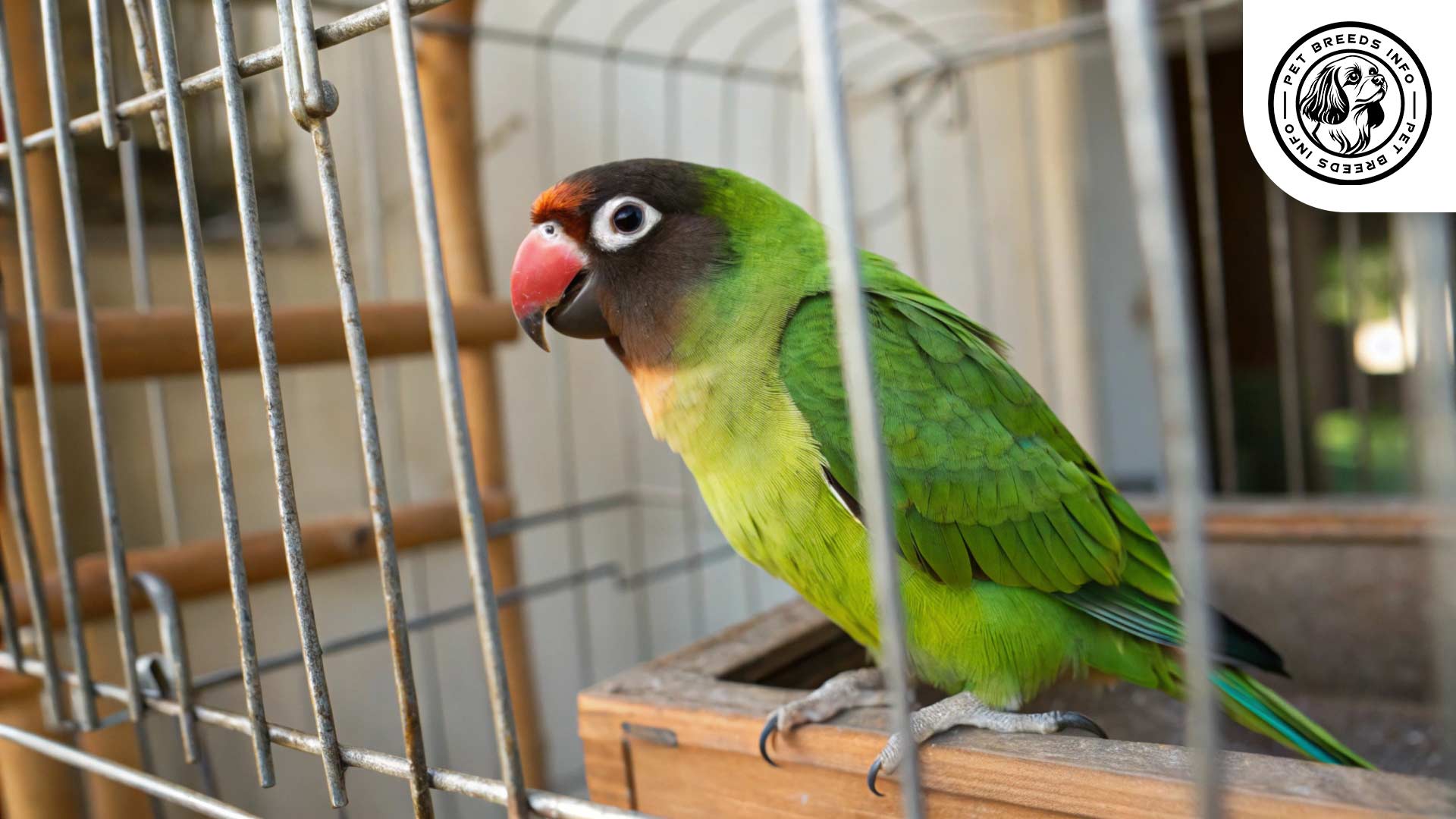
Conclusion and Final Thoughts
The Masked Lovebird is a wonderful pet for those who have the time and dedication to interact with and care for an active, social bird. Their beautiful plumage, playful personality, and affectionate nature make them a delightful addition to any bird-loving home.
However, they require regular social interaction and stimulation, making them best suited for individuals or families who can devote time to their care.
Read More: Masked Finch
Before adopting a Masked Lovebird, potential owners should consider their lifespan, space requirements, and need for companionship. Proper research and preparation will ensure a happy and fulfilling life for both the bird and its owner.
FAQ
Do Masked Lovebirds talk?
They are not known for speech but can mimic basic sounds or whistles.
Can Masked Lovebird live alone?
While possible, they thrive in pairs due to their strong need for companionship.
Are Masked Lovebird suitable for children?
Yes, for older children who understand gentle handling.
Do Masked Lovebird bite?
They can nip if frightened or unsocialized. Early training helps minimize this.
How often should Masked Lovebird be out of the cage?
Daily, supervised playtime outside the cage is recommended for exercise and stimulation.

